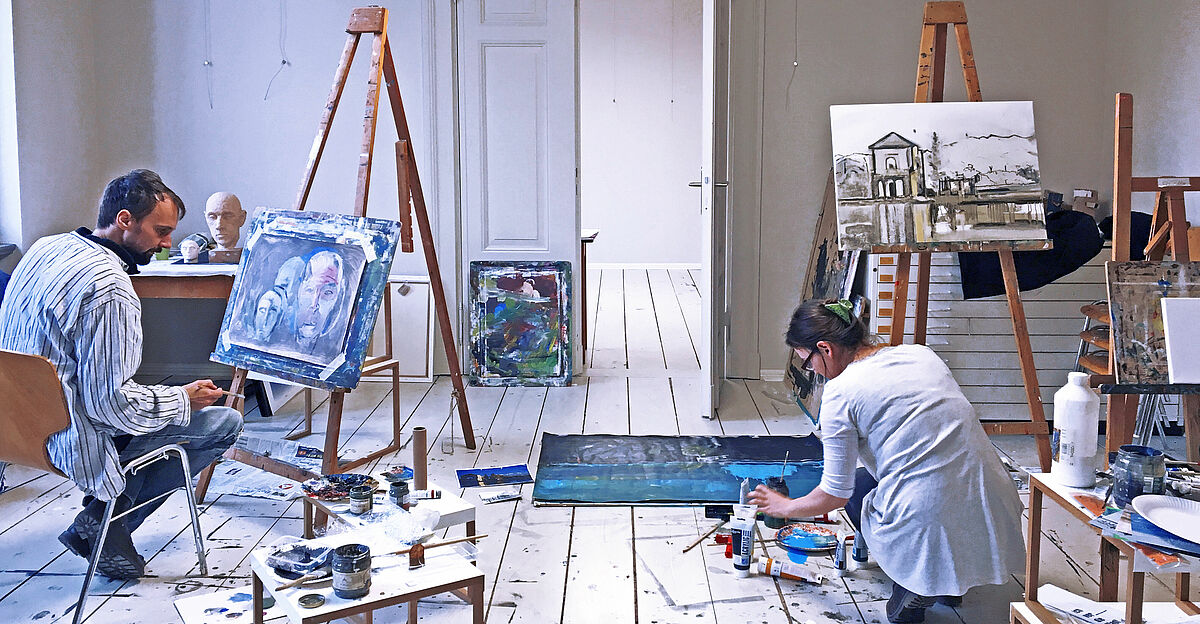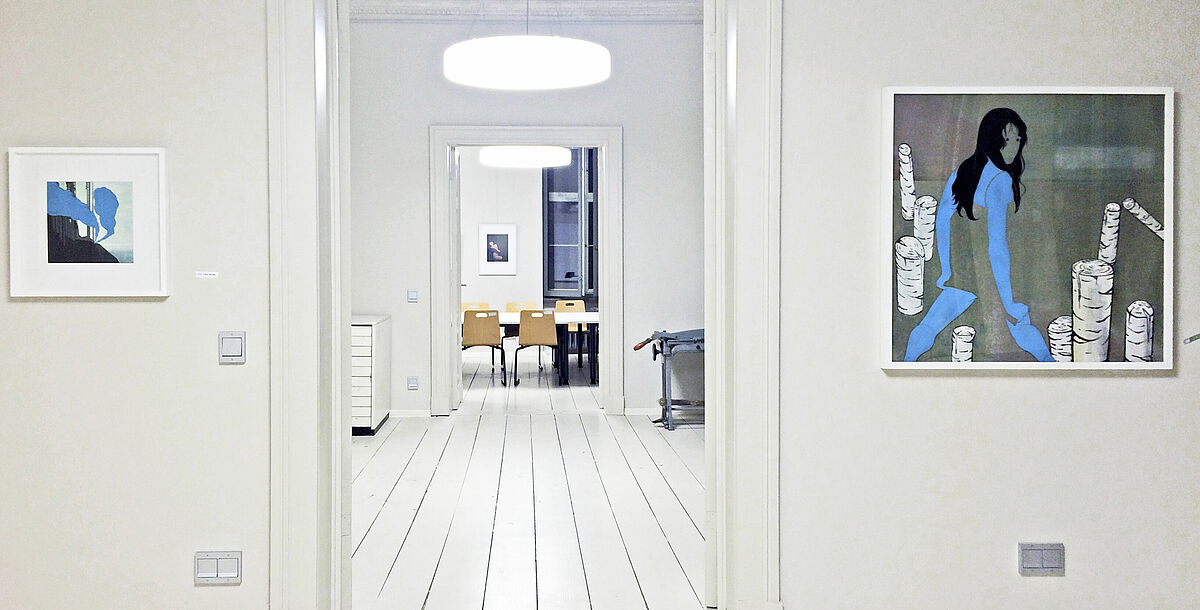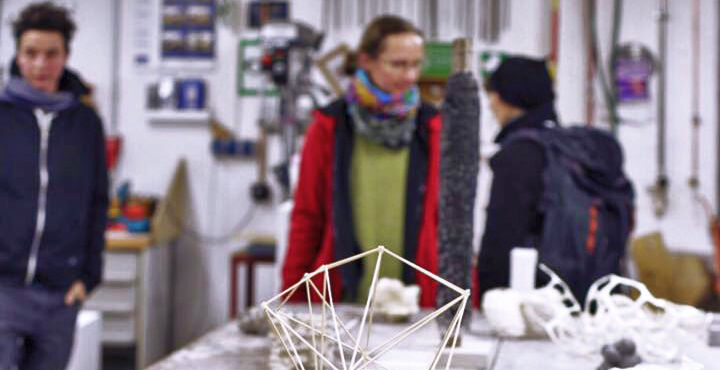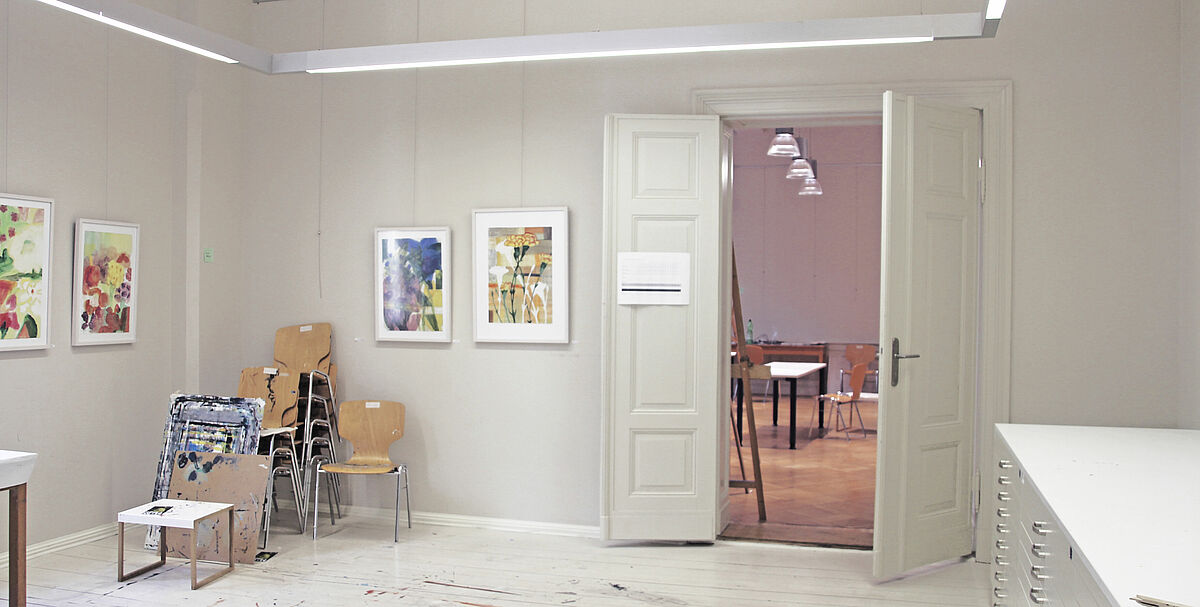Chair of Painting, Drawing, Space and Interdisciplinary Artistic Strategies
Teaching centres on the individual artistic development and work of the students. This is based on the fundamentals of craftsmanship, interdisciplinary investigations and playful, experimental approaches. We train individual perception and foster individual modes of expression. An essential component of the programme is continuous participation in artistic classes and work in the workshops. Reflecting on one's own work as well as the work of other contemporary artists is an important requirement for artistic and art education practice. Finally, we practise the elements of presentation, documentation and the conveyance of one’s own artistic position.
Drawing
Today, drawing as a genre in its own right is used in more diverse ways than ever before - from linear traces on paper to large, expansive installations. Drawing can mean, for example, looking at signs, descriptions, illusions; drawing can be understood constructively or analytically, conceptually or autonomously.
Painting
In recent decades, the concept of painting has continuously changed and developed across isms and schools and continues to produce new visual languages. Such changes and expansions are treated on an equal footing with traditional techniques in artistic practice.
Space
Space as a concept of volume can stand for classical sculptures, objects, and installations, but can also refer to action space, thought space, play space, built space, urban space, living space, working space and much more in line with various tendencies seen in 20th century art.
Interdisciplinary artistic strategies
Artistic strategy can be a binding element between the realms of drawing, painting and space and is closely linked to the concept of interdisciplinarity. This debate does not have to end in art-specific aspects, but rather establishes and incorporates references to other disciplines where appropriate.





